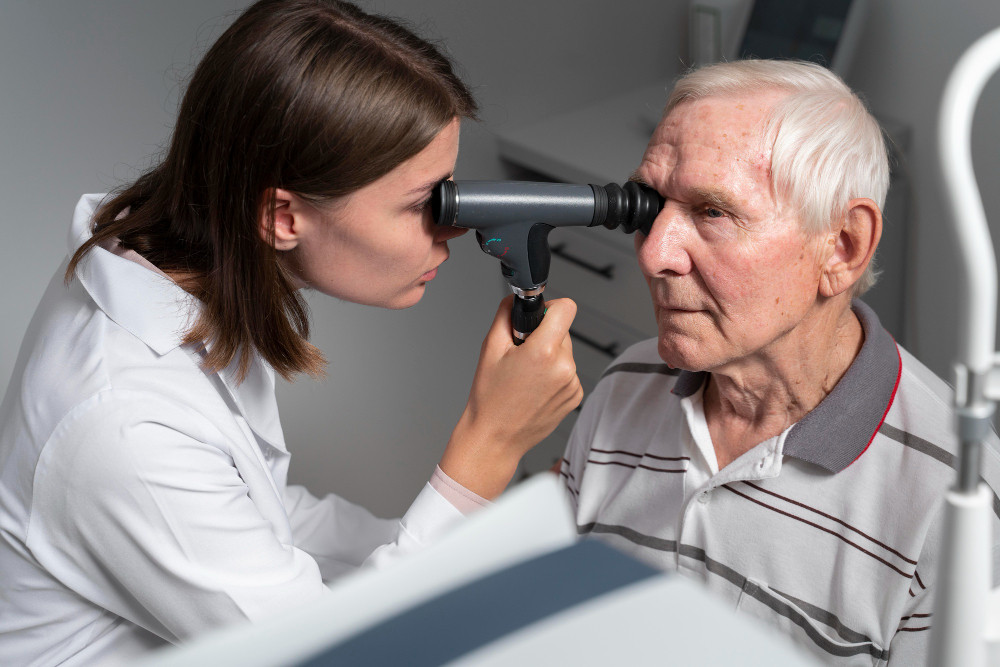Koma merupakan keadaan ketidaksadaran diri yang mendalam dan berkepanjangan. Saat koma, seseorang tidak akan sadar akan lingkungan sekitar dan tidak merespons terhadap rangsangan internal maupun eksternal. Artinya, tidak mampu berkomunikasi, merespons rangsangan seperti suara atau sentuhan, atau bergerak secara sadar.
Koma bisa disebabkan oleh berbagai kondisi, seperti cedera parah pada kepala, stroke, peradangan otak, kerusakan organ vital, overdosis obat, dan juga gangguan metabolik seperti ketoasidosis atau hipoglikemia.
Penyebab Koma pada Penderita Diabetes
Koma pada penderita diabetes dikenal dengan istilah diabetic coma. Kondisi ini merupakan keadaan darurat medis yang serius dan dapat mengancam jiwa. Terdapat beberapa penyebab koma pada penderita diabetes, di antaranya:
Ketoasidosis diabetes
Ketoasidosis pada penderita diabetes adalah komplikasi serius yang lebih umum terjadi pada penderita diabetes tipe 1. Kondisi ini berkembang ketika tubuh tidak memiliki cukup insulin untuk membantu sel-sel tubuh memasukkan glukosa ke dalam sel.
Sebagai gantinya, tubuh mulai memecah lemak menjadi energi dan menghasilkan asam keton sebagai produk sampingan. Menumpuknya keton di dalam darah dapat mengubah keasaman tubuh dan menyebabkan ketidakseimbangan elektrolit yang berakibat komplikasi serius.
Gejala ketoasidosis diabetes biasanya berkembang sangat cepat dalam 24 jam, di antaranya:
- Merasa sangat haus
- Buang air kecil lebih sering
- Perasaan ingin muntah
- Sakit perut
- Tubuh lemah atau kelelahan
- Sesak napas
- Napas berbau seperti buah
- Kebingungan
Setelah gejala makin berkembang, kesadaran diri akan makin berkurang hingga mengalami koma.
Baca Juga: Tanda-Tanda Prediabetes yang Bisa Dikenali
Hyperosmolar hyperglycemic state (HHS)
HHS adalah komplikasi dari hiperglikemia, terutama pada diabetes tipe 2. Hiperglikemia adalah kondisi di mana kadar glukosa darah sangat tinggi.
HHS terjadi ketika kadar gula darah sangat tinggi dalam jangka waktu yang lama, yaitu di atas 600 mg/dL. Kondisi ini dapat menyebabkan dehidrasi yang parah, gejala kebingungan dan juga gangguan kesadaran.
HHS juga bisa terjadi karena beberapa faktor lain, di antaranya:
- Resistansi terhadap insulin atau tidak adanya produksi insulin dalam jumlah yang cukup untuk mengatur kadar glukosa darah
- Infeksi atau adanya penyakit lain yang memicu lonjakan kadar gula darah
- Peningkatan asupan makanan atau minuman tinggi gula
HHS biasanya ditandai dengan beberapa gejala, di antaranya:
- Dehidrasi parah
- Kesulitan bernapas
- Denyut nadi cepat
- Sering buang air kecil
- Kebingungan dan gangguan kesadaran
Baca Juga: Gejala yang Dirasakan Bila Kadar Gula Darah Tinggi
Hipoglikemia parah
Orang dengan diabetes juga bisa mengalami hipoglikemia, di mana kadar gula darah turun di bawah tingkat normal atau di bawah 70 mg/dL. Kondisi ini umum dialami mereka yang menggunakan obat-obatan antidiabetes seperti insulin atau obat penurun kadar gula darah lainnya.
Hipoglikemia biasanya disertai dengan beberapa gejala, di antaranya:
- Gemetar
- Kecemasan dan kebingungan
- Berkeringat
- Denyut jantung cepat
- Pusing
- Perasaan lapar
- Mual
- Mengantuk
- Perubahan warna kulit menjadi pucat dan kering
- Perasaan lemah dan tidak berenergi
- Penglihatan kabur
- Kesemutan di bibir, lidah atau pipi
- Sakit kepala
- Kejang
Hipoglikemia yang dibiarkan berkembang dan menjadi parah dapat menyebabkan komplikasi seperti koma atau gangguan lain yang membahayakan jiwa. Hipoglikemia yang parah termasuk kondisi yang mengancam jiwa dan memerlukan penanganan segera.
Baik ketoasidosis, hiperglikemia, maupun hipoglikemia bukanlah sesuatu yang boleh dibiarkan berkembang. Segera cari pertolongan medis apabila kadar gula darah Anda terlalu tinggi atau rendah dan sampai menyebabkan Anda pingsan. Konsultasikan dengan dokter terkait pengelolaan kadar gula darah Anda untuk mengurangi risiko diabetic coma.
Jika Anda memerlukan saran atau konsultasi medis, Anda dapat mengunjungi dokter atau memanfaatkan fitur konsultasi yang tersedia di aplikasi Ai Care dengan mengunduh aplikasi Ai Care dari App Store atau Play Store.
Mau tahu informasi seputar penyakit lainnya? Cek di sini, ya!
- Sean Edbert Lim, MBBS
Mayo Clinic (2022). Diabetic coma. Available from: https://www.mayoclinic.org/diseases-conditions/diabetic-coma/symptoms-causes/syc-20371475
Cleveland Clinic (2023). Diabetes-Related Coma. Available from: https://my.clevelandclinic.org/health/diseases/16628-diabetic-coma
Better Health Channel. Diabetic coma. Available from: https://www.betterhealth.vic.gov.au/health/conditionsandtreatments/diabetic-coma
National Institute of Neurological Disorders and Stroke. Glossary of Neurological Terms Coma. Available from: https://www.ninds.nih.gov/health-information/disorders/glossary-neurological-terms#coma
Mayo Clinic (2022). Diabetic ketoacidosis. Available from: https://www.mayoclinic.org/diseases-conditions/diabetic-ketoacidosis/symptoms-causes/syc-20371551
American Diabetes Association. Hyperglycemia (High Blood Glucose). Available from: https://diabetes.org/living-with-diabetes/treatment-care/hyperglycemia
American Diabetes Association. Hypoglycemia (Low Blood Glucose). Available from: https://diabetes.org/living-with-diabetes/treatment-care/hypoglycemia











